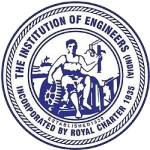Analytical study on the behaviour of concrete in-filled FRP tubular columns subjected to lateral cyclic loading
Abstract
The purpose of this paper is to present a three-dimensional non-linear finite element analysis of concrete in-filled fiber-reinforced polymer (FRP) tubular columns subjected to lateral cyclic loading. Stress-Strain Confined model, Hashin's damage failure model, and plasticity model were used to model concrete, fiber-reinforced polymer tubes and steel reinforcement inside the tubes. The parameters involved in this study are strength of concrete, fiber orientation, thickness of the tube, and interfacial bonding. The load-deflection behaviour and failure patterns were investigated using finite element analysis. The results obtained from this numerical study that concrete in-filled FRP tubular columns with 5mm tube thickness showed higher load carrying capacity compared to columns with 3mm tube thickness. The results revealed that concrete in-filled FRP tubular columns with fiber orientation in hoop direction (00) have higher load carrying capacity and ductility when compared to columns with fiber orientation of 300 and 530. The results showed that there is no considerable difference in interfacial bonding of the concrete in-filled FRP tubular columns with different co-efficient of friction between FRP tubes and concrete.
Downloads
References
Sadeghian, Pedram & Rahai, Alireza & Ehsani, Mohammad. (2008). Numerical Modeling of Concrete Cylinders Confined with CFRP Composites. Journal of Reinforced Plastics and Composites. 27. 1309-1321. 10.1177/0731684407084212.
ABAQUS standard user’s manual. Hibbitt. Karlsson and Sorensen. Inc., USA, 2008.
Richart FE, Brandtzaeg A and Brown RL. A study of the failure of concrete under combined compressive stresses. Bulletin no. 185, Univ. of Illinois, Eng. Experimental Station, Champaign, 1928.
Lam, Lik & Teng, J.G.. (2003). Design-Oriented Stress– Strain Model for FRP-Confined Concrete. Construction and Building Materials. 17. 471-489. 10.1016/S0950-0618(03)00045-X.
ACI (American Concrete Institute). Building code requirements for structural concrete and commentary. ACI 318M-08, USA, 2008.
Abdallah, Maha & Shazly, Mostafa & Mohamed, Hamdy & Masmoudi, Radhouane & Mousa, Ahmed. (2017). Nonlinear finite element analysis of short and long reinforced concrete columns confined with GFRP tubes. Journal of Reinforced Plastics and Composites. 36. 073168441769875. 10.1177/0731684417698758.
Hashin, Z.: Failure criteria for unidirectional fiber composites. J. Appl. Mech. 47(2), 329–334 (1980).
Hong, Won-Kee & Kim, Hee-Cheul. (2011). Behaviour of concrete columns confined by carbon composite tube. Canadian Journal of Civil Engineering. 31. 178-188. 10.1139/l03-078
Hu, Hsuan-Teh & Asce, M & Huang, C. S. & Wu, Ming-Hsien & Wu, Yih-Min. (2003). Nonlinear Analysis of Axially Loaded Concrete-Filled Tube Columns with Confinement Effect. Journal of Structural Engineering-asce - J STRUCT ENG-ASCE. 129. 10.1061/(ASCE)0733-9445(2003)129:10(1322).
ASCE (American Society of Civil Engineers). Task committee on concrete and masonry structure. state of the art report on finite element analysis of reinforced concrete. New York, 1982.
Teng JG, Lam L. Behaviour and modeling of fiber reinforced polymer-confined concrete. J Struct Engng ASCE 2004;130(11):713-23.
Parvin A, Jamwal AS. Effects of wrap thickness and ply configuration on composite-confined concrete cylinders. Compos Struct 2005;67(4):437–42.
Copyright (c) 2021 Varunkumar Veerapandian

This work is licensed under a Creative Commons Attribution 4.0 International License.
I/We agree with the provision of the Bye-Law 118 of The Institution of Engineers (India) which states that copyright of each paper published in Institution Journal or Annual Technical Volume in full or in Abstract at its centres shall lie with the Institution.

